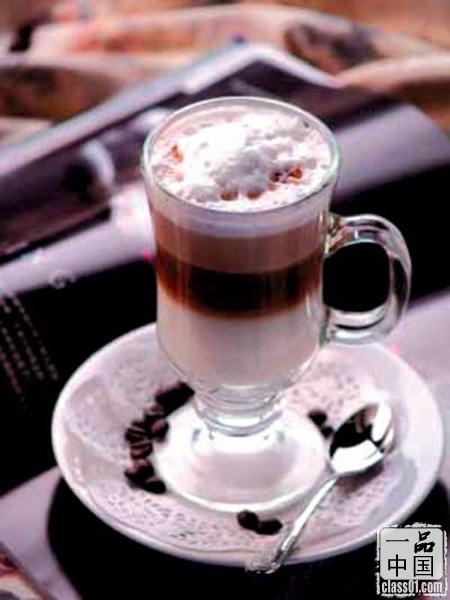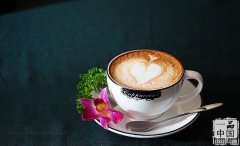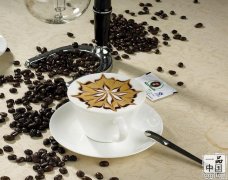Coffee, latte.

Latte is the translation of Italian "Latte". Latte (CoffeeLatte) is a kind of fancy coffee. Latte is a classic mixture of Italian espresso and milk. Italians also like lattes as breakfast drinks. In the Italian kitchen in the morning, coffee and milk are usually brewed on the sunlit stove. The ultimate blend of coffee and milk, Italian latte coffee is pure milk and coffee, American latte will replace milk with milk foam, most of the local lattes are like this. Ole Coffee can be seen as an European latte, which is quite different from American lattes and lattes.
An authentic latte is made with 70% milk, 20% foam and 10% coffee. Although coffee has the least ingredients, it is decided to be called coffee. There is an important implication here: the minority is not necessarily subordinate to the majority, and the minority often becomes the protagonist in a particular environment.
Many people like to drink lattes, and their personalities seem to bear some resemblance to lattes. Some people say that the latte character represents a kind of fashion. However, the character of the latte is more like that of Taoism, which emphasizes the integration of the heart and the outside world, which is very consistent with the traditional Chinese personality. People with latte character do not pursue the appreciation of others like petty bourgeoisie, pursue deliberately, and are not influenced by others, at the same time, they do not reject tradition.
Lattes are actually using their own way of thinking to inject a ray of warm milk fragrance into this cup of bitter coffee of life. they inadvertently coruscate the originally difficult and boring life with a kind of sweet fragrance and add love to life. who can say that this is not an art of life? If you want to do it, make a latte. If you smell yourself, you will infect others.
The origin of the latte the famous phrase "I'm not in the cafe, I'm on my way to the cafe" was said by a musician in Vienna. The air of Vienna is always filled with the smell of music and Latte coffee. The first person to add milk to the coffee was Kochsky of Vienna, who also opened the first coffee shop in Vienna.
In 1683, the Turkish army attacked Vienna for the second time. The then Emperor Augustus I of Vienna had an offensive and defensive alliance with King Augustus II of Poland, and as soon as the Poles heard the news, reinforcements would arrive quickly. But the question is, who will break through the siege of the Turks to deliver letters to the Poles?
Kochsky, a Viennese who had traveled in Turkey, volunteered to deceive the besieged Turkish army in fluent Turkish, crossed the Danube and moved to Poland. Although the Ottoman army was brave and skillful, it retreated hastily under the attack of the Polish and Viennese armies, leaving behind a large number of military supplies outside the city. Among them were 500 bags of coffee beans-coffee beans that the Muslim world had controlled for centuries and refused to flow out so easily reached the Viennese. But the Viennese didn't know what it was, and only Kochsky knew it was a magical drink.
So he asked for the 500 bags of coffee beans as a reward for breaking through the siege and used the trophies to open Vienna's first coffee shop, Blue bottle. At first, the business of the cafe was not good. The reason is that people in the Christian world do not like to drink coffee grounds as Muslims do; in addition, they are not used to this dark and bitter drink. So the clever Kochsky changed the recipe, filtering out the coffee grounds and adding a lot of milk-this is the original version of the latte that is common in cafes today.
Make lattes
1. Soak the cup (warm cup) in hot water to raise the temperature, and then pour out the excess water for use.
2. Grind the deeply roasted coffee beans, pour the coffee powder into the filler, flatten the coffee powder with a press stick, then buckle the filler to the Italian coffee machine to extract ESPRESSO (the ratio of coffee to fresh milk is 1:1).
3. Take the right amount of milk and put it under the steam nozzle of the espresso machine to steam it into hot milk.
4. Pour the steaming milk into the cup.
5. Shake the cup up and down to make the foam rise.
6. Finally, pour the ESPRESSO into the cup slowly.
Important Notice :
前街咖啡 FrontStreet Coffee has moved to new addredd:
FrontStreet Coffee Address: 315,Donghua East Road,GuangZhou
Tel:020 38364473
- Prev

Coffee brewing cappuccino
The full-bodied taste of espresso, accompanied by lubricated foam; it has a hint of essence and dew. Foamed milk sprinkled with cinnamon powder and mixed with the aroma of bottom-up Italian coffee, the new generation of coffee is fascinated by this, with an irresistible unique charm, which smells good at first, and when you drink it for the first time, you can feel the sweetness and crisp of a lot of milk bubbles.
- Next

Coffee brewed mocha coffee
Some people say that mocha is a certain place of origin, and some people remember that mocha is sweet chocolate coffee. In fact, authentic mocha coffee is only produced in the Republic of Yemen in the southwest of the Arabian Peninsula, grows on steep hillsides at elevations of 3, 000 to 8, 000 feet, and is the oldest coffee in the world. Mocha (CafeMocha) is made from Italian espresso, chocolate sauce, fresh.
Related
- Beginners will see the "Coffee pull flower" guide!
- What is the difference between ice blog purified milk and ordinary milk coffee?
- Why is the Philippines the largest producer of crops in Liberia?
- For coffee extraction, should the fine powder be retained?
- How does extracted espresso fill pressed powder? How much strength does it take to press the powder?
- How to make jasmine cold extract coffee? Is the jasmine + latte good?
- Will this little toy really make the coffee taste better? How does Lily Drip affect coffee extraction?
- Will the action of slapping the filter cup also affect coffee extraction?
- What's the difference between powder-to-water ratio and powder-to-liquid ratio?
- What is the Ethiopian local species? What does it have to do with Heirloom native species?

